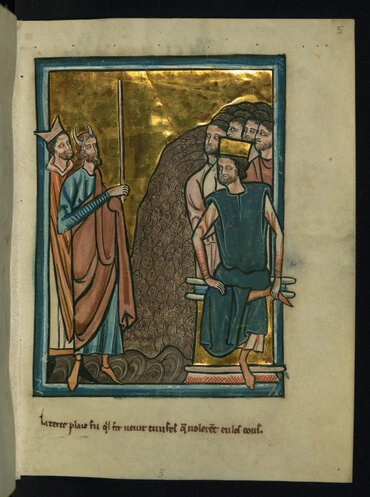1
Ja kahdeksantena päivänä Mooses kutsui Aaronin ja hänen poikansa ja Israelin vanhimmat
2
ja sanoi Aaronille: "Ota itsellesi härkävasikka syntiuhriksi ja oinas polttouhriksi, molemmat virheettömiä, ja tuo ne Herran eteen.
3
Ja puhu israelilaisille ja sano: 'Ottakaa kauris syntiuhriksi ja vasikka ja karitsa, molemmat vuoden vanhoja ja virheettömiä, polttouhriksi
4
ja härkä ja oinas yhteysuhriksi, uhrattaviksi Herran edessä, ynnä ruokauhri, johon on öljyä sekoitettu, sillä tänä päivänä ilmestyy teille Herra'."
5
Ja he toivat, mitä Mooses oli käskenyt, ilmestysmajan edustalle, ja koko seurakunta astui esiin ja asettui Herran eteen.
6
Ja Mooses sanoi: "Näin Herra on käskenyt teidän tehdä, että Herran kirkkaus ilmestyisi teille".
7
Ja Mooses sanoi Aaronille: "Astu alttarin ääreen ja uhraa syntiuhrisi ja polttouhrisi ja toimita itsellesi ja kansalle sovitus ja uhraa sitten kansan uhrilahja ja toimita heille sovitus, niinkuin Herra on käskenyt".
8
Niin Aaron astui alttarin ääreen ja teurasti oman syntiuhrivasikkansa.
9
Ja Aaronin pojat toivat hänelle veren, ja hän kastoi sormensa vereen ja siveli sitä alttarin sarviin, mutta muun veren hän vuodatti alttarin juurelle.
10
Mutta syntiuhriteuraan rasvan ja munuaiset ja maksanlisäkkeen hän poltti alttarilla, niinkuin Herra oli Moosekselle käskyn antanut.
11
Ja lihan ja nahan hän poltti tulessa leirin ulkopuolella.
12
Sitten hän teurasti polttouhrin, ja Aaronin pojat ojensivat hänelle veren, ja hän vihmoi sen alttarille ympärinsä.
13
Ja he ojensivat hänelle polttouhrin kappaleittain ynnä pään, ja hän poltti ne alttarilla.
14
Ja hän pesi sisälmykset ja jalat ja poltti ne polttouhrin päällä alttarilla.
15
Sitten hän toi kansan uhrilahjan ja otti kansan syntiuhrikauriin, teurasti sen ja uhrasi sen syntiuhrina samalla tavalla kuin edellisen.
16
Ja hän toi myös polttouhrin ja uhrasi sen säädetyllä tavalla.
17
Ja hän toi ruokauhrin ja otti siitä kouransa täyden ja poltti sen alttarilla aamu-polttouhrin lisäksi.
18
Sitten hän teurasti härän ja oinaan kansan yhteysuhriksi, ja Aaronin pojat ojensivat hänelle veren, ja hän vihmoi sen alttarille ympärinsä.
19
Mutta härän ja oinaan rasvat, rasvahännän, rasvakalvon, munuaiset ja maksanlisäkkeen,
20
nämä rasvat he panivat rintalihojen päälle, ja hän poltti rasvat alttarilla.
21
Mutta rintalihain ja oikean reiden heilutuksen Aaron toimitti Herran edessä, niinkuin Mooses oli käskenyt.
22
Ja Aaron kohotti kätensä kansaa kohti ja siunasi heidät, ja kun hän oli toimittanut syntiuhrin, polttouhrin ja yhteysuhrin, astui hän alas.
23
Ja Mooses ja Aaron menivät ilmestysmajaan, ja kun he tulivat sieltä ulos, siunasivat he kansan. Silloin Herran kirkkaus ilmestyi kaikelle kansalle.
24
Ja tuli lähti Herran tyköä ja kulutti polttouhrin ja rasvat alttarilta. Ja kaikki kansa näki sen, ja he riemuitsivat ja lankesivat kasvoillensa.







